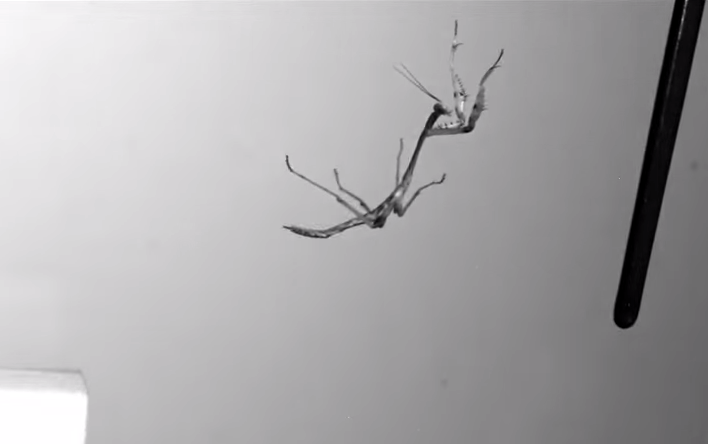Fun fact: Praying Mantiss leaps are hella impressive — hella being the scientific term — their jumps usually only taking a tenth of a second. Such impressiveness was recently captured in this 1000-frames-per-second bug-leap video, which may prove useful in the future of robotics.
“Maintaining stability so that the body does not rotate uncontrollably in mid-air is a difficult task,” [Malcolm Burrows of the University of Cambridge] says. “When the movement is rapid, as it is in a jump, and you don’t have wings, then the task is even more difficult. Nevertheless, a praying mantis moves rapidly and controls the rotation of its body so that it lines up precisely with a target, and does all of this in less than 100 milliseconds.”
Jumping control with this level of precision is not the norm for an insect, the researchers say. Most insects, they note, lose control as soon as they achieve lift-off, causing them to spin uncontrollably and often crash-land.

Oh, and another cool side of this: Knowledge of this process may be useful in the development of robots:
“We now have a good understanding of the physics and the biomechanics of these precise aerial acrobatics,” [Greg Sutton of the University of Bristol] says.”But because the movements are so quick, we need to understand the role the brain is playing in their control once the movements are under way.”
And from Empire State Tribune:
“For small robots, flying is energetically expensive, and walking is slow. Jumping makes sense – but controlling the spin in jumping robots is an almost intractable problem. The juvenile mantis is a natural example of a mechanical set-up that could solve this,” [Burrows says].
And robotkind and bugkind rejoiced.

(via ABC Science) (Images via Tumblr, Tumblr)
Are you following The Mary Sue on Twitter, Facebook, Tumblr, Pinterest, & Google +?









Published: Mar 8, 2015 08:33 pm